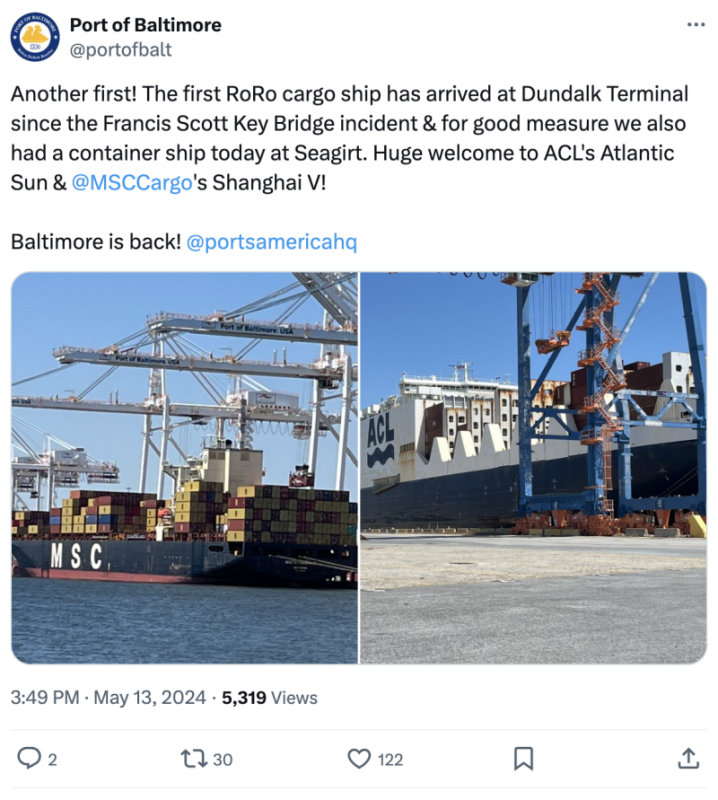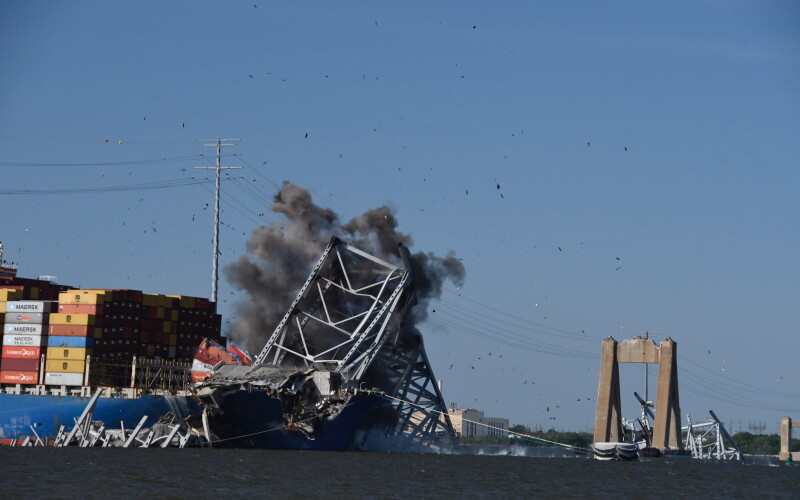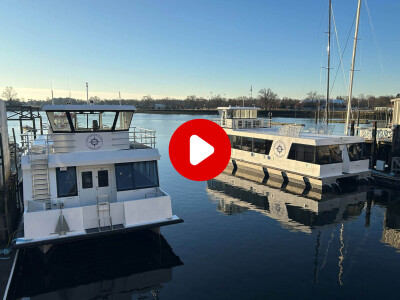Small explosive charges dropped the last section of the Francis Scott Key Bridge, freeing the 985’ container ship Dali from where it was pinned since the March 26 allision that shut down Baltimore’s port.
In what officials called a “precision cutting” operation, the last of the bridge’s fourth span section tumbled into the Patapsco River around 5 p.m. Monday. Over the next two days the plan was to refloat the Dali and move it back into the port.
The Dali experienced two power failures in port 10 hours before its outbound transit and subsequent crash, the National Transportation Safety Board said in a preliminary report May 14.
Investigators found there had been two blackouts on the ship while it underwent maintenance at the port’s Seagirt Marine Terminal. In the first shutdown, a crew member mistakenly closed an engine exhaust damper for one of the ship's generators. The engine stalled when exhaust gases could not escape, according to an NTSB narrative.
A second generator started, as the crew worked to get the first operating again. But then insufficient fuel pressure slowed the second generator and its breaker tripped, resulting in another power failure, the report says.
Crew members got the first generator’s exhaust damper open and restarted it, restoring power.
The containership lost power twice as it approached the bridge, veering into one of the main support piers as the crew tried to restore power. Six construction workers died when they plunged into the river with the bridge deck collapse.
The NTSB ruled out fuel contamination as a possible cause of the power failure and is focused on the ship’s electrical system, the agency said.
In the seven weeks since the bridge collapse 365 vessels, mostly smaller tug and barge tows have transited through emergency channels. In a press conference Monday Maryland Gov. Wes Moore said finally freeing the ship – and its crew of 21 still on board – was a key stop toward fully reopening the 50’ depth, 700’ wide federal channel.
Army Corps of Engineers officials say their plan is still on track to fully reopen port operations by May 31.
Hours before the cutting operation, Port of Baltimore officials announced the first ro/ro cargo ship had arrived at the Dundalk Terminal since the bridge collapse.
The 971'x123' ACL Atlantic Sun is typical of the trade in cars, trucks, farm equipment and other vehicles that are a mainstay of Baltimore trade.
“For good measure we also had a container ship today at Seagirt,” port officials wrote on social media. “Baltimore is back!”





.jpg.small.400x400.jpg)
